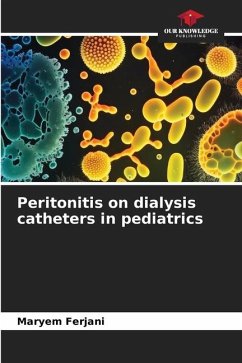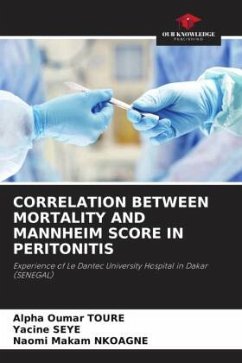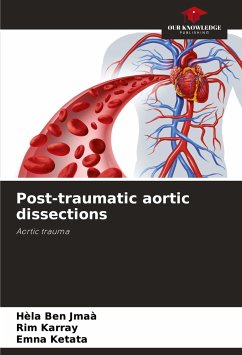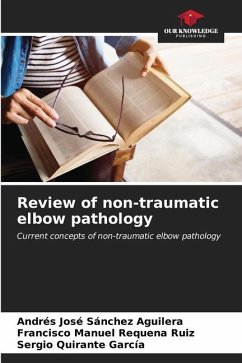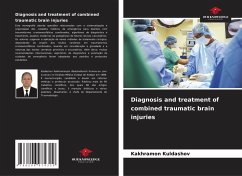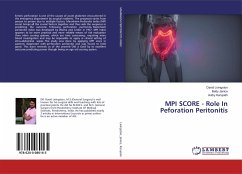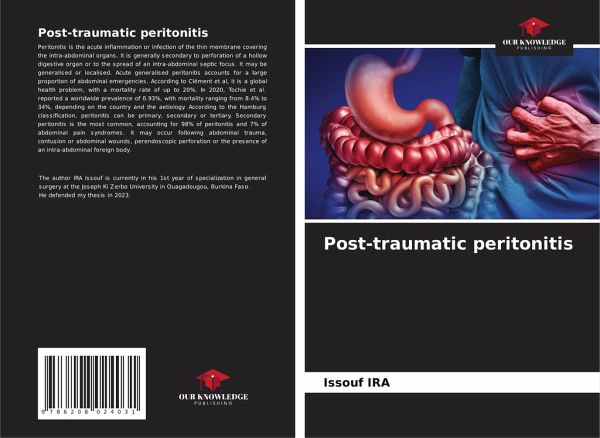
Post-traumatic peritonitis
Versandkostenfrei!
Versandfertig in 6-10 Tagen
40,99 €
inkl. MwSt.

PAYBACK Punkte
20 °P sammeln!
Peritonitis is the acute inflammation or infection of the thin membrane covering the intra-abdominal organs. It is generally secondary to perforation of a hollow digestive organ or to the spread of an intra-abdominal septic focus. It may be generalised or localised. Acute generalised peritonitis accounts for a large proportion of abdominal emergencies. According to Clément et al, it is a global health problem, with a mortality rate of up to 20%. In 2020, Tochie et al. reported a worldwide prevalence of 0.93%, with mortality ranging from 8.4% to 34%, depending on the country and the aetiology....
Peritonitis is the acute inflammation or infection of the thin membrane covering the intra-abdominal organs. It is generally secondary to perforation of a hollow digestive organ or to the spread of an intra-abdominal septic focus. It may be generalised or localised. Acute generalised peritonitis accounts for a large proportion of abdominal emergencies. According to Clément et al, it is a global health problem, with a mortality rate of up to 20%. In 2020, Tochie et al. reported a worldwide prevalence of 0.93%, with mortality ranging from 8.4% to 34%, depending on the country and the aetiology. According to the Hamburg classification, peritonitis can be primary, secondary or tertiary. Secondary peritonitis is the most common, accounting for 98% of peritonitis and 7% of abdominal pain syndromes. It may occur following abdominal trauma, contusion or abdominal wounds, perendoscopic perforation or the presence of an intra-abdominal foreign body.






